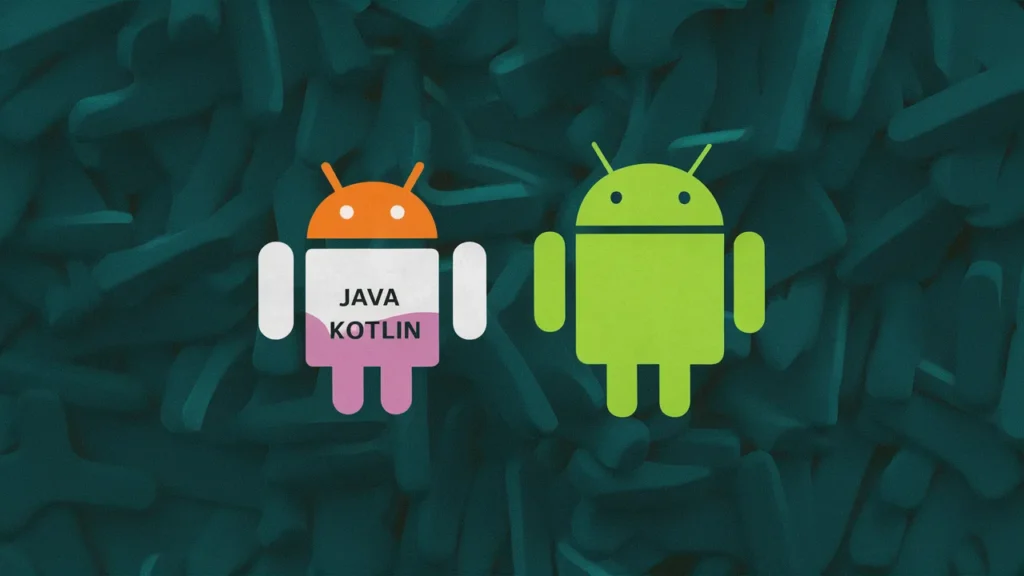Kotlin vs Java, these two are prominent programming languages used primarily for Android development. While Java has been a mainstay for years, Kotlin has emerged as a strong competitor since its introduction by JetBrains. This comparison will highlight the key features of both languages to help you understand their strengths and differences.
1. Syntax and Language Design
Kotlin:
- Concise Syntax: Kotlin reduces boilerplate code, making it more concise and readable.
- Type Inference: Supports type inference, reducing the need to explicitly declare variable types.
- Null Safety: Built-in null safety features help prevent NullPointerExceptions.
- Smart Casts: Automatically casts types when possible, reducing the need for explicit casting.
Java:
- Verbose Syntax: More boilerplate code is needed, which can make the code more verbose.
- Explicit Types: Requires explicit type declaration, making the code more verbose but arguably clearer.
- Null References: Does not have built-in null safety, leading to potential NullPointerExceptions.
- Manual Casting: Requires explicit casting of types.
2. Interoperability
Kotlin:
Seamless Interoperability: Can interoperate with Java seamlessly, allowing the use of Java libraries and frameworks within Kotlin code.
Java:
Kotlin Interoperability: While Java can call Kotlin code, the integration is not as seamless as Kotlin calling Java.
3. KOTLIN vs JAVA Coroutines and Concurrency
Kotlin:
Coroutines: Provides built-in support for coroutines, which simplifies asynchronous programming and concurrency.
Java:
Thread-based Concurrency: Relies on traditional thread-based concurrency and the `java.util.concurrent` package, which can be more complex and verbose.
4. Extension Functions
Kotlin:
Extension Functions: Allows adding methods to existing classes without modifying their source code, enhancing flexibility and readability.
Java:
No Extension Functions: Does not support extension functions. Similar functionality can be achieved using utility classes and static methods.
5. Data Classes
Kotlin:
Data Classes: Provides a concise way to create classes that are primarily used to hold data, automatically generating methods like `toString()`, `equals()`, and `hashCode()`.
Java:
Verbose Data Classes: Requires manual creation of boilerplate code for data classes, making them more verbose.
6. KOTLIN vs JAVA Functional Programming
Kotlin:
Functional Programming Support: Strongly supports functional programming paradigms, including lambda expressions, higher-order functions, and immutability.
Java:
Functional Programming: Supports functional programming with the introduction of lambda expressions and the Stream API in Java 8, but not as extensively as Kotlin.
7. Tooling and IDE Support
Kotlin:
IDE Support: Excellent support in IntelliJ IDEA, Android Studio, and other JetBrains tools. Strong integration with Gradle and Maven.
Java:
IDE Support: Extensive support across all major IDEs including Eclipse, IntelliJ IDEA, and NetBeans. Strong integration with build tools like Gradle and Maven.
8. Community and Ecosystem
Kotlin:
Growing Community: Rapidly growing community with strong support from JetBrains and Google. Increasing number of libraries and frameworks.
Java:
Established Community: Large and mature community with a vast ecosystem of libraries, frameworks, and tools. Extensive documentation and long-term support.
Conclusion
KOTLIN vs JAVA, both have their own strengths and are suitable for different use cases. Kotlin offers modern features, conciseness, and null safety, making it a great choice for new projects and developers looking for a more efficient and less error-prone language. Java, with its established ecosystem and widespread use, remains a solid choice, especially for legacy systems and projects requiring extensive libraries and community support.


